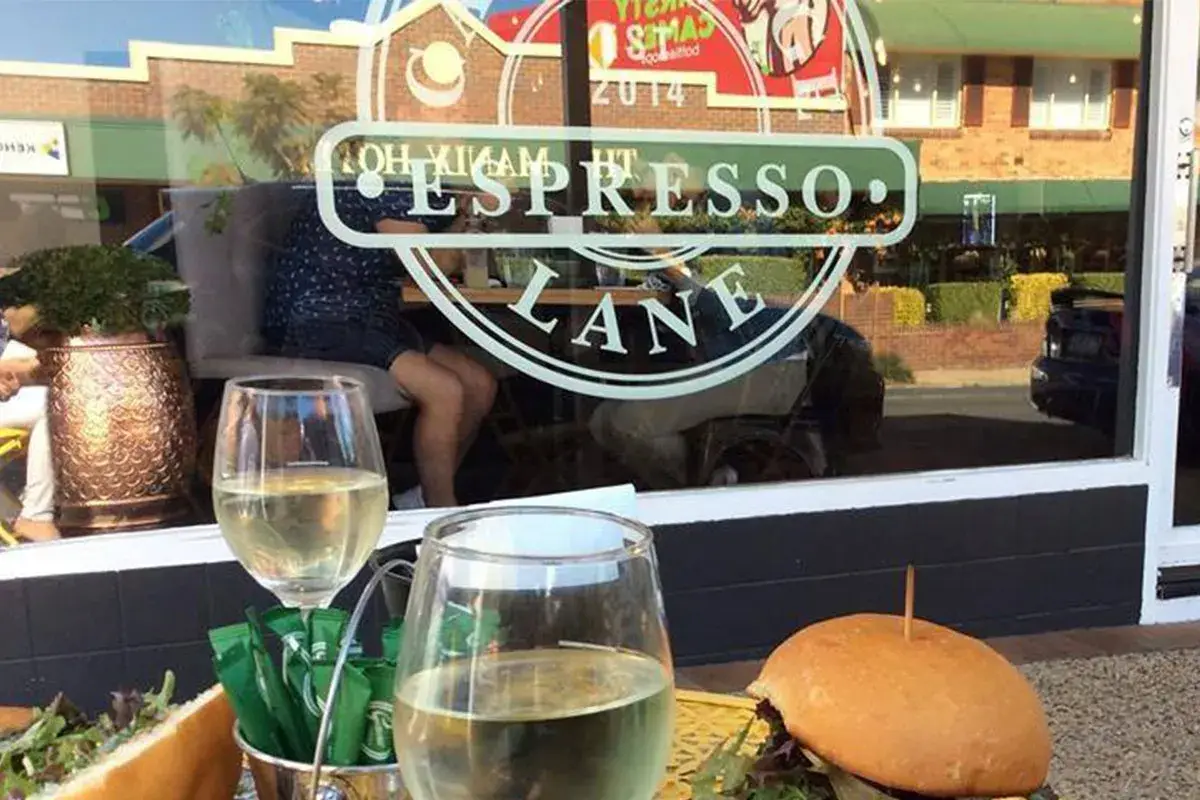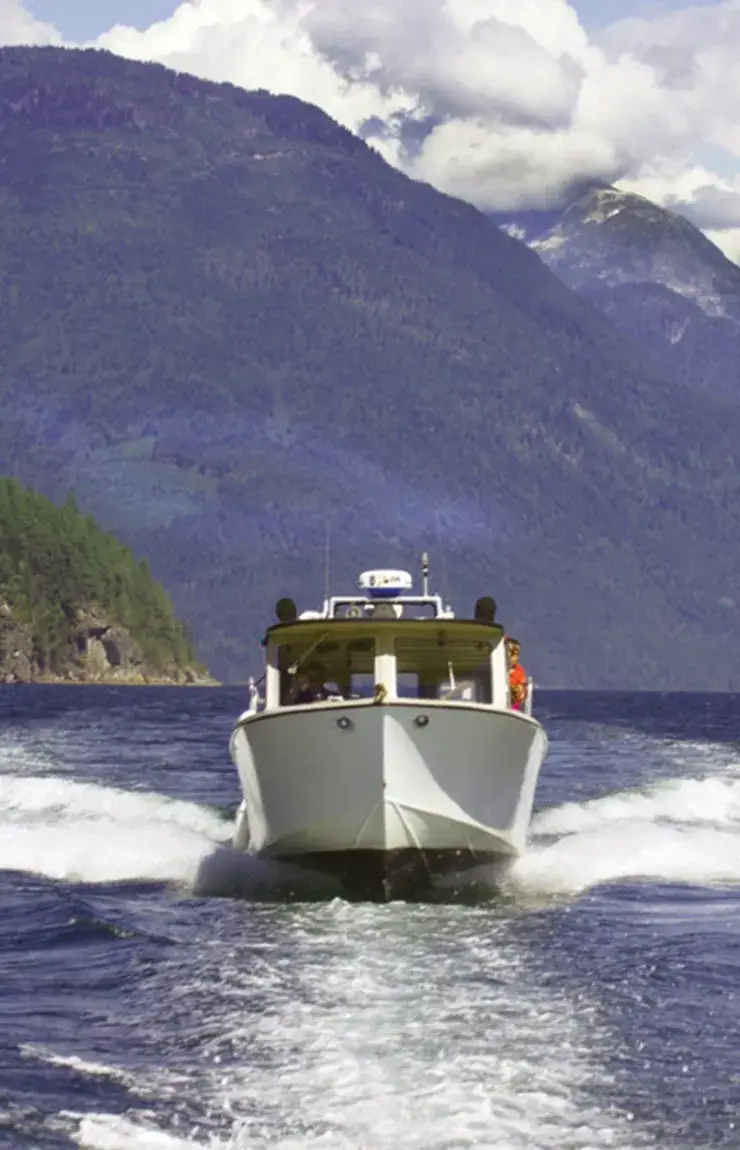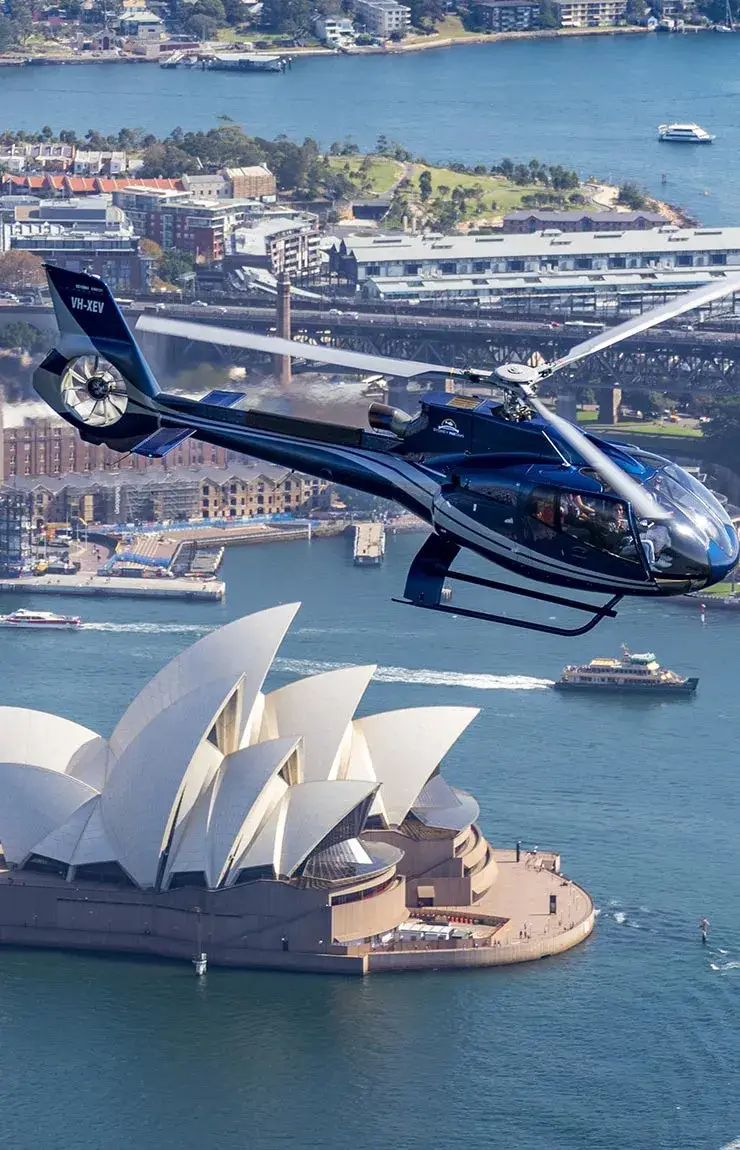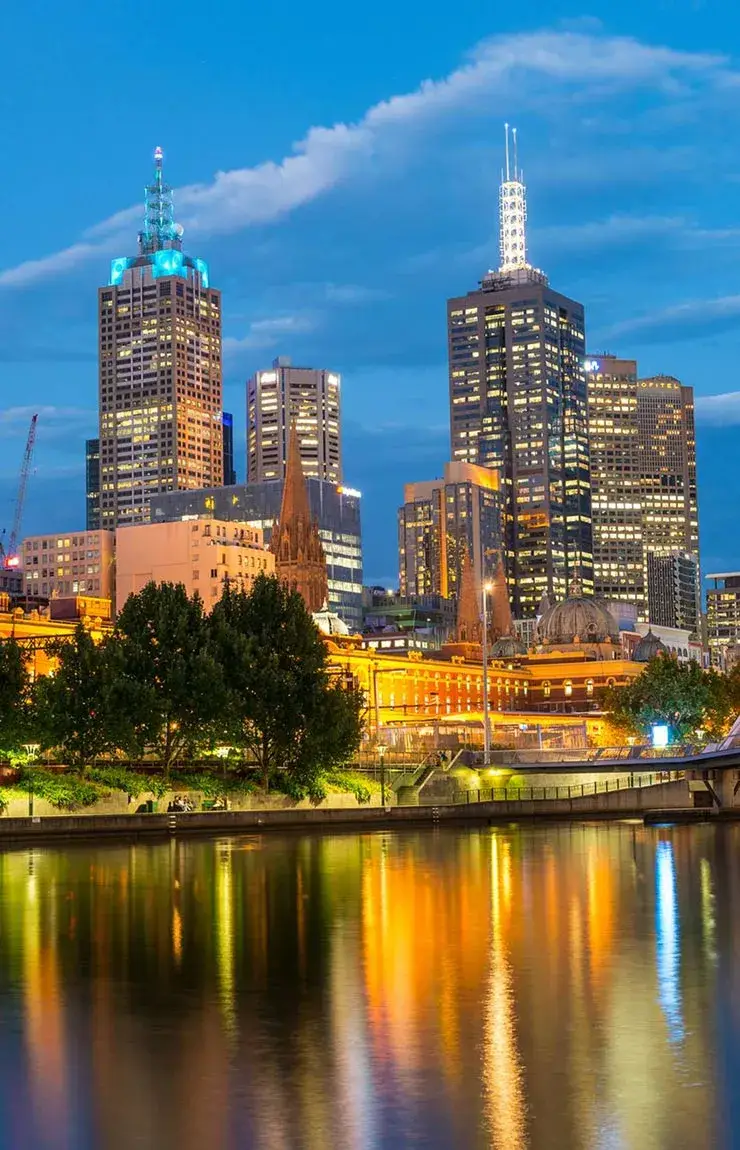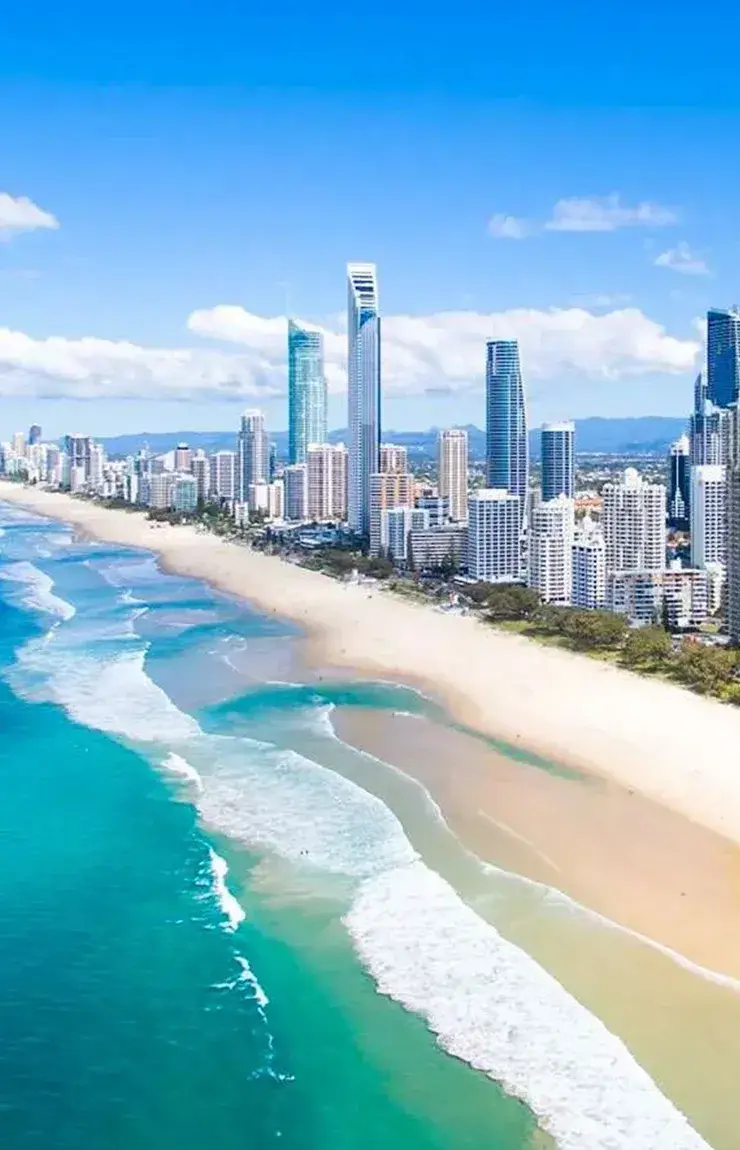Travel and Tours in Brisbane!
Manly
- Home
- >
- Manly
Brisbane Destination
Manly
Located under 30 minutes from Brisbane’s central area, the coastal suburb of Manly is famous for its laid-back yet elegant marine vibe. Delight in various activities, from family fish picnics and tapas bar hopping to adventurous pursuits like water sports, cycling, and sailing.
Having instant access to Moreton Bay, Manly is undoubtedly a paradise for boat enthusiasts. Manly Harbour is the focal point of Manly, boasting the biggest marina in the southern hemisphere, filled with stunning yachts and excellent places to enjoy fresh seafood. Visit the Royal Queensland Yacht Squadron for a meal with a scenic backdrop, then head out onto the water with a crew afterward.
With new seafood deliveries arriving in the center of the suburb, it’s easy to understand why Manly has charming tapas and wine bars, specialty coffee shops, and other culinary treasures emerging. On the first and third Saturday of each month, the Manly Farmers Market can be found by the waterfront at Manly Harbour Village.
Ipswich in Queensland is best known for its annual agricultural spectacle—the Ipswich Show. The 152nd Ipswich Show will be held from Friday, 16 May to Sunday, 18 May 2025, with Friday 16 May designated as the public holiday for Ipswich residents.
- Friday 16 May 2025: Opening day, 9 AM – 9 PM (Public holiday for Ipswich)
- Saturday 17 May 2025: 9 AM – 9 PM
- Sunday 18 May 2025: 9 AM – 6 PM (final day)
Held at the Ipswich Showgrounds (81 Warwick Road), the Ipswich Show is a three-day community favourite drawing over 30,000 visitors from Ipswich, Brisbane, the Scenic Rim, Toowoomba, and beyond.
Highlights include:
- Livestock and equestrian competitions, including cattle, horses, and show jumpers
- Woodchopping and chainsaw racing, showcasing lumberjack skill and speed
- Pig racing, dog high jump, Bison Stampede, and Freestyle Trial shows
- Sideshow Alley with carnival rides, games, and showbags resistant to ages
- Animal Boulevard, farm exhibits with cuddly baby animals
- Daily fireworks, aerial circus acts, Jetpack shows, and entertainment from Ashton Circus
- Trade pavilions and exhibition halls, featuring local produce, arts, crafts, and community displays
Ipswich Turf Club, located at Ipswich Racecourse (219 Brisbane Road, Bundamba, QLD), hosts regular thoroughbred race meetings, including the major TAB Ipswich Cup, a highlight on Queensland’s racing calendar.
Here are some upcoming races scheduled at Ipswich Turf Club:
- Thursday, 31 July 2025
- Friday, 8 August 2025
- Thursday, 14 August 2025
- Wednesday, 20 August 2025
- And further meetings through to December 2025, including the Ipswich Cup on Saturday, 21 June 2025
A full list of events for 2024–25 is available in their official racing calendar, which includes midweek and weekend fixtures, feature races, and stakes days
- Date: Saturday, 21 June 2025
- Gates Open: 10:30 AM, with race coverage and hospitality packages starting from 11:30 AM
- This is the marquee race day of the season, offering a blend of sporting tradition, fashion, and social celebration
Manly’s heart beats along Cambridge Parade, where cafés, boutique shops, and restaurants spill out onto the streets. The suburb’s crown jewel is Manly Harbour Village—home to one of Australia’s largest boat harbours, the Royal Queensland Yacht Squadron, and a lively foreshore lined with picnic spots, playgrounds, and walking paths.
- Relaxed & Friendly: Life here moves at a gentler pace, with locals greeting each other by name.
- Water-Oriented: Sailing, fishing, paddle boarding, and waterfront dining are part of daily life.
- Market Culture: The Manly Creative Markets every Sunday showcase artisan goods, fresh produce, and live music, enhancing the village atmosphere.
Manly’s esplanade offers a scenic walkway and cycle path stretching to Wynnum, perfect for morning jogs or sunset strolls. The Moreton Bay Marine Park lies just offshore, providing opportunities for whale watching, island hopping, and exploring unique coastal ecosystems.
Thanks to its bayfront location, Manly enjoys milder temperatures than inland Brisbane, with refreshing sea breezes in summer and gentle winters. This makes it a year-round outdoor playground.
- Sailing Capital: A hub for yacht races and boating enthusiasts.
- Food Scene: From casual fish and chips to upscale dining with marina views.
- Events: Regular festivals, markets, and regattas that bring the community together.
- Gateway to Moreton Bay: Ideal starting point for exploring islands like North Stradbroke and Moreton Island.
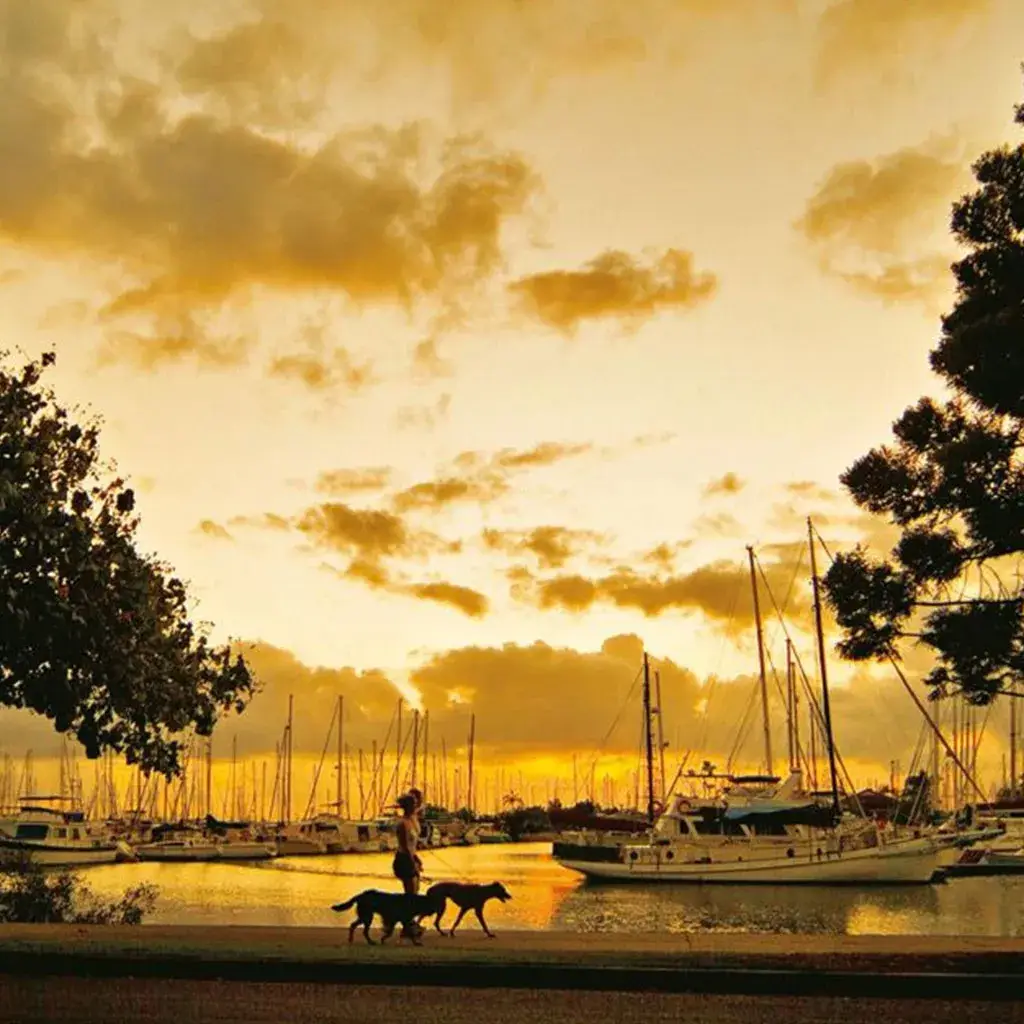
Manly is a charming coastal suburb located just 30 kilometers southeast of Brisbane’s central business district, nestled along the scenic shores of Moreton Bay. Known for its relaxed, laid-back atmosphere, this picturesque area offers a beautiful contrast to the city’s hustle and bustle, making it an ideal destination for both locals and tourists seeking a peaceful retreat with a maritime touch. The suburb is a popular spot for boating enthusiasts, with the bustling Manly Harbour acting as a central hub for maritime activity. The harbor is home to several marinas, where yachts and smaller vessels are docked, and it provides easy access to the bay’s islands and natural wonders.
The beach in Manly, while not as large as some of the other Brisbane beaches, offers a tranquil spot to unwind. Its gentle waves make it perfect for a leisurely swim or a relaxing day by the water, while the nearby esplanade provides a scenic walkway that stretches along the coastline. Strolling along the esplanade, visitors are treated to panoramic views of Moreton Bay, with the occasional ferry passing by, bound for one of the nearby islands. The area is also dotted with parks and green spaces, making it a popular place for picnics, cycling, or simply enjoying a peaceful afternoon.
Manly’s dining scene is a highlight of the area, with a variety of cafés, restaurants, and seafood eateries lining the waterfront, many of which offer stunning views of the water. The combination of fresh, local produce and the region’s strong seafood culture means there’s always something delicious to enjoy. Whether it’s grabbing fish and chips from a casual beachside spot or sitting down to a more sophisticated meal, the waterfront dining options in Manly offer a memorable culinary experience.
Historically, Manly retains its charm with a mix of heritage-listed buildings and quaint streets, giving it an old-world feel. The suburb has a deep connection to Brisbane’s maritime past, and remnants of this history can be seen throughout the area. The local community is tight-knit and welcoming, with many residents enjoying the slower pace of life, contrasted with the more urbanized areas closer to the city. It’s a place where you can enjoy a cup of coffee at a local café while watching the sun set over the bay or spend the day cycling along the coast.
For those looking to explore further, Manly serves as a gateway to the stunning islands of Moreton Bay. Ferries regularly depart from the Manly Wharf to islands like North Stradbroke, Coochiemudlo, and Moreton Island, offering the opportunity for day trips filled with outdoor activities like hiking, camping, and wildlife watching.
With its blend of natural beauty, maritime culture, and laid-back vibe, Manly offers a unique and tranquil escape from the more urban parts of Brisbane. Whether you’re visiting for a few hours or thinking about making it your home, this idyllic suburb provides a perfect balance of outdoor adventures, relaxing coastal living, and a sense of community that’s hard to find elsewhere in the Brisbane area.
Other Things To Do in Manly
Manly Harbour Village
Manly Harbour Village is the closestlocation to the Brisbane Central Business District forreaching Moreton Bay and is partof the Southern Moreton Bay Tourist Drive. Craftunforgettablemoments and uncoverconcealedtreasures in this stunning Queensland travelspot. Manly Harbour Village offers numerous dining and drinking options, charmingshops to explore, as well as opportunities for sailing and cruising adventures, beautifulseaside parks, […]
Wynnum Manly Hideaway
Wynnum Manly Hideaway – A Comprehensive Overview Location & Accessibility Nestled across Wynnum and Manly, just under 20 minutes by car from Brisbane Airport and 25–35 minutes to Brisbane’s CBD, this accommodation is conveniently placed for both recreational travelers and professionals. Well-connected via local train and bus stations, it also provides easy access to major […]
Half Day Brisbane Sightseeing Tour
Embark on a scenic tour of Brisbane, starting in the heart of the city with views of historic landmarks and the city’s vibrant atmosphere. After a brief introduction, we’ll head to Mount Coot-tha for breathtaking panoramic views of Brisbane, Moreton Bay, and the surrounding mountains—perfect for photos. Next, we’ll visit the tranquil Brisbane Botanic Gardens, […]
Coffee Tours in Manly
The Arsonist
The Arsonist in Manly, Brisbane, is a standout venue that brings a bold, fire-driven dining and drinking experience to the heart of Brisbane’s bayside. Located along the popular Cambridge Parade, just steps from the scenic Manly Harbour, The Arsonist is not your typical...
Cambridge Lane Espresso
Cambridge Lane Espresso is a charming laneway café tucked away just off Cambridge Parade in Manly, Brisbane, offering a cozy escape only a short stroll from the picturesque harbour. Nestled between rustic brick walls and shaded by the surrounding buildings, this...
Manly Kitchen
Nestled at Shop 1, 50 Cambridge Parade, Manly Kitchen carved out a beloved spot in the Manly dining scene as a relaxed café offering breakfast, brunch, and specialty coffee. A blend of cozy seaside warmth and contemporary café style, it welcomed locals and...
 5 hours Days
Day cruises/snorkeling/wildlife boat tours in Moreton Bay (departing from Manly)
Manly
5 hours Days
Day cruises/snorkeling/wildlife boat tours in Moreton Bay (departing from Manly)
Manly
Manly Harbour Village
Manly Harbour Village is the closestlocation to the Brisbane Central Business District forreaching Moreton Bay...
From $99 View More 6 to 7 hours (from mid-morning through afternoon) Days
Meet at Wynnum Manly Hideaway (or one of its holiday homes), or centrally at William Gunn Jetty, Manly Boat Harbour
Manly
6 to 7 hours (from mid-morning through afternoon) Days
Meet at Wynnum Manly Hideaway (or one of its holiday homes), or centrally at William Gunn Jetty, Manly Boat Harbour
Manly
Wynnum Manly Hideaway
Wynnum Manly Hideaway – A Comprehensive Overview Location & Accessibility Nestled across Wynnum and Manly,...
From $120 View More 1/2 Days
Time confirmed after the booking
Manly
1/2 Days
Time confirmed after the booking
Manly
Half Day Brisbane Sightseeing Tour
Embark on a scenic tour of Brisbane, starting in the heart of the city with...
From $60 View MoreWine Tours Around Manly
BWS Manly Village
Located at 222 Stratton Terrace, Manly QLD 4179, BWS Manly Village enjoys a prime spot within Manly Harbour Village—making it a convenient stop for locals and visitors stocking up on wine, beer, or spirits while enjoying...
Daily Wine Tours
Here's a collection of images capturing the essence of Daily Wine Tours—from scenic vineyard views to the joy of tasting sessions—typical of the immersive experiences offered around Brisbane and Mount Tamborine...
Mount Tamborine Wine Tours
Nestled in the lush Gold Coast Hinterland, Mount Tamborine is one of Queensland’s most celebrated wine regions, offering a perfect blend of gourmet indulgence, spectacular scenery, and boutique charm. For those...
Weather in Manly
Manly, Brisbane, enjoys a pleasant subtropical climate that blends warm sunshine, gentle sea breezes, and a relaxed coastal atmosphere. Being right on the shores of Moreton Bay, the weather here is moderated by the ocean, meaning summers are warm without being unbearably hot, and winters are mild with crisp mornings.
Summer (December–February) – Warm and humid, with average daytime temperatures between 27–30 °C (81–86 °F). Afternoon sea breezes keep things comfortable, and occasional tropical storms roll in, often with spectacular lightning over the bay.
Autumn (March–May) – Mild and sunny, perfect for waterfront walks and sailing. Temperatures range from 20–27 °C (68–81 °F), and humidity begins to drop, making outdoor activities more comfortable.
Winter (June–August) – Mild, dry, and sunny, with daytime temperatures around 18–22 °C (64–72 °F). Mornings can be cool (10–12 °C / 50–54 °F), but crisp blue skies are the norm.
Spring (September–November) – Warm and bright, with temperatures climbing back to 24–28 °C (75–82 °F). Light breezes and clear skies make it one of the most pleasant times to visit.
Rainfall is spread across the year but is heaviest in summer, often as short, sharp showers that clear quickly. Thanks to its bayfront position, Manly rarely experiences extreme heat, and the sea breeze adds a refreshing touch even on warmer days. The climate is ideal for boating, fishing, and enjoying outdoor cafes year-round.
Best Times to Visit Manly, Brisbane
Autumn (March – May)
This is arguably the top season for visiting.
Expect mild, comfortable temperatures ranging from about 22 °C to 27 °C (72–81 °F), with lower humidity and fewer rainstorms—ideal for coastal strolls, café hopping, or hinterland adventures.
Attractions are less crowded post-summer, and accommodation and airfare prices typically drop.
TRAVEL.COM®
Virgin Australia
Brisbane Kids
Spring (September – November)
Another excellent time to explore.
Warm days (around 24–28 °C / 75–82 °F), low humidity, and abundant sunshine make outdoor activities delightful.
Manly’s flora comes alive in spring, and the timing aligns with cultural festivities like art and music events.
Family Traveller
My Favourite Escapes
Brisbane Kids
Winter (June – August)
Brisbane winters are mild and dry, with daytime highs of 20–22 °C (68–72 °F) and crisp, cool evenings.
Great for whale watching, visiting markets, or quieter sightseeing days—without the summer heat.
TripSavvy
Daily Telegraph
Brisbane Kids
Summer (December – February)
Hot and humid at around 25–30 °C (77–86 °F), with afternoon thunderstorms common.
This is peak tourist season, meaning crowds and higher prices—but also long sunny days and festive energy.
TripSavvy
My Favourite Escapes
Brisbane Kids
At-a-Glance Season Snapshot
Season Months Why Visit?
Autumn March – May Mild weather, fewer crowds, more affordable
Spring September – Nov Fresh blooms, ideal weather for activities
Winter June – August Dry and mild—great for whale watching & markets
Summer Dec – February Warm and festive—but hot, humid, and crowded
Final Thoughts
For the most balanced experience—comfortable weather, fewer crowds, and good value—autumn (March–May) and spring (September–November) are your best bets for visiting Manly, Brisbane. But thanks to the region’s genial subtropical climate, every season brings its own unique appeal.
Manly, enjoys a humid subtropical climate, meaning it has warm to hot summers, mild winters, and plenty of sunshine year-round. Being right on Moreton Bay, Manly often feels a touch cooler than Brisbane’s inland suburbs thanks to sea breezes.
Average Temperatures by Season
Summer (December – February)
Daytime highs: 27 °C – 30 °C (81 °F – 86 °F)
Night lows: 20 °C – 23 °C (68 °F – 73 °F)
Humid and often sticky, with afternoon thunderstorms bringing short bursts of heavy rain.
Autumn (March – May)
Daytime highs: 22 °C – 28 °C (72 °F – 82 °F)
Night lows: 15 °C – 20 °C (59 °F – 68 °F)
Warm days, comfortable evenings, and humidity gradually decreasing.
Winter (June – August)
Daytime highs: 20 °C – 22 °C (68 °F – 72 °F)
Night lows: 10 °C – 13 °C (50 °F – 55 °F)
Crisp, dry mornings with lots of sunshine—jackets are needed early and late in the day.
Spring (September – November)
Daytime highs: 24 °C – 28 °C (75 °F – 82 °F)
Night lows: 15 °C – 19 °C (59 °F – 66 °F)
Pleasant warmth, low humidity early in the season, gradually rising toward summer.
Temperature Comfort Tips
Summer: Light, breathable clothing is best; pack an umbrella for sudden storms.
Winter: A light jacket or sweater is usually enough—heavy coats are rarely needed.
All Year: Sunscreen is essential due to high UV levels in Queensland.
Manly, has a humid subtropical climate that blends warm, sunny weather with the refreshing influence of Moreton Bay. The seaside location keeps the climate milder than inland Brisbane, with cooling sea breezes in summer and slightly warmer nights in winter.
Seasonal Climate Overview
🌞 Summer (December – February)
Warm to hot and humid, with average highs between 27–30 °C (81–86 °F).
Afternoon sea breezes take the edge off the heat, while short but intense tropical thunderstorms are common.
Nights are mild at 20–23 °C (68–73 °F).
🍂 Autumn (March – May)
Mild, sunny, and less humid, with highs of 22–28 °C (72–82 °F).
The bay is still warm for swimming, sailing, and water sports.
Rainfall decreases compared to summer, making it a popular season for outdoor festivals.
❄ Winter (June – August)
Dry and pleasantly cool, with sunny skies and highs of 20–22 °C (68–72 °F).
Nights can dip to 10–13 °C (50–55 °F), so light jackets are needed in the mornings and evenings.
It’s an ideal time for walking, cycling, and market days without summer humidity.
🌸 Spring (September – November)
Warm and bright, with highs climbing from 24 °C (75 °F) in September to 28 °C (82 °F) in November.
Humidity begins to rise, but sea breezes keep conditions comfortable.
A popular time for sailing events and waterfront dining.
Overall Climate Feel
Rainfall: Around 1,200 mm annually, concentrated in summer thunderstorms.
Sunshine: Manly enjoys over 260 sunny days a year, perfect for outdoor activities.
Breezes: Regular bay winds keep the air fresh and reduce the intensity of heat.
This climate makes Manly a year-round destination for boating, fishing, seaside markets, and wine tours, though autumn and spring are often considered the most comfortable seasons for visitors.
Ipswich features a subtropical oceanic climate, characterised by mild, relatively dry winters (June to August) and hot, rainy summers (November to March). Located in eastern Queensland, Australia, approximately 10 km west of Brisbane’s suburbs and 43 km inland from the coast, Ipswich experiences seasonal patterns typical of the southern hemisphere, with seasons opposite those in the northern hemisphere.
The best time for visiting Ipswich is during autumn, from mid-April to mid-May. Winter is also favourable, although nighttime temperatures can be low. Summers may bring extreme heat.
In Ipswich, the mean temperature for July, the coldest month, is 13.6 °C, while January, the warmest month, averages 25.6 °C.
While the climate shares similarities with that of Brisbane, Ipswich generally receives less rainfall due to its increased distance from the ocean, the primary source of precipitation. The city also exhibits slightly more continental characteristics: summer heat records are notably high, and winter nights are often colder, occasionally seeing temperatures fall just below freezing.
Ipswich features a subtropical oceanic climate, characterised by mild, relatively dry winters (June to August) and hot, rainy summers (November to March). Located in eastern Queensland, Australia, approximately 10 km west of Brisbane’s suburbs and 43 km inland from the coast, Ipswich experiences seasonal patterns typical of the southern hemisphere, with seasons opposite those in the northern hemisphere.
The best time for visiting Ipswich is during autumn, from mid-April to mid-May. Winter is also favourable, although nighttime temperatures can be low. Summers may bring extreme heat.
In Ipswich, the mean temperature for July, the coldest month, is 13.6 °C, while January, the warmest month, averages 25.6 °C.
While the climate shares similarities with that of Brisbane, Ipswich generally receives less rainfall due to its increased distance from the ocean, the primary source of precipitation. The city also exhibits slightly more continental characteristics: summer heat records are notably high, and winter nights are often colder, occasionally seeing temperatures fall just below freezing.
Ipswich features a subtropical oceanic climate, characterised by mild, relatively dry winters (June to August) and hot, rainy summers (November to March). Located in eastern Queensland, Australia, approximately 10 km west of Brisbane’s suburbs and 43 km inland from the coast, Ipswich experiences seasonal patterns typical of the southern hemisphere, with seasons opposite those in the northern hemisphere.
The best time for visiting Ipswich is during autumn, from mid-April to mid-May. Winter is also favourable, although nighttime temperatures can be low. Summers may bring extreme heat.
In Ipswich, the mean temperature for July, the coldest month, is 13.6 °C, while January, the warmest month, averages 25.6 °C.
While the climate shares similarities with that of Brisbane, Ipswich generally receives less rainfall due to its increased distance from the ocean, the primary source of precipitation. The city also exhibits slightly more continental characteristics: summer heat records are notably high, and winter nights are often colder, occasionally seeing temperatures fall just below freezing.
Ipswich features a subtropical oceanic climate, characterised by mild, relatively dry winters (June to August) and hot, rainy summers (November to March). Located in eastern Queensland, Australia, approximately 10 km west of Brisbane’s suburbs and 43 km inland from the coast, Ipswich experiences seasonal patterns typical of the southern hemisphere, with seasons opposite those in the northern hemisphere.
The best time for visiting Ipswich is during autumn, from mid-April to mid-May. Winter is also favourable, although nighttime temperatures can be low. Summers may bring extreme heat.
In Ipswich, the mean temperature for July, the coldest month, is 13.6 °C, while January, the warmest month, averages 25.6 °C.
While the climate shares similarities with that of Brisbane, Ipswich generally receives less rainfall due to its increased distance from the ocean, the primary source of precipitation. The city also exhibits slightly more continental characteristics: summer heat records are notably high, and winter nights are often colder, occasionally seeing temperatures fall just below freezing.





